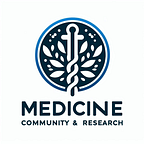Phage Therapy in Veterinary Medicine: A Comprehensive Exploration of Applications, Challenges, and Opportunities
By: Angela Kim, Quang La, Jack Williams, Brandon James, Carly Palmer
Introduction
In the vast landscape of veterinary medicine, where bacterial infections pose a persistent threat to animal health and welfare, the emergence of antibiotic resistance represents a formidable challenge. As traditional antibiotics become increasingly ineffective against a growing array of bacterial pathogens, the search for alternative therapeutic strategies has intensified. In recent years, phage therapy — a century-old approach that utilizes bacteriophages to target and kill bacteria — has emerged as a promising alternative, offering tailored precision medicine solutions to combat infectious diseases in animals. This article takes a thorough look at the use of phage therapy in veterinary medicine, delving into its various applications, potential benefits, obstacles, and potential for future development.
Applications of Phage Therapy in Veterinary Medicine
The uses of phage therapy in veterinary medicine span a diverse and extensive scope, covering a myriad of animal species and contagious illnesses. In the realm of household pets, like dogs, cats, and horses, phage therapy has exhibited effectiveness in battling various bacterial infections, including skin and soft tissue infections, urinary tract infections, and respiratory tract infections. Additionally, phage therapy displays potential in tackling persistent and recurring infections that may not respond well to traditional antibiotic treatments.
In the world of livestock farming, bacterial infections can have major financial consequences. However, with phage therapy, we have a powerful and precise tool for combating pathogenic bacteria responsible for diseases like mastitis in dairy cows, respiratory infections in poultry, and enteric infections in swine. By specifically targeting harmful bacteria, while sparing beneficial ones, phage therapy has the potential to reduce our reliance on antibiotics in animal production and decrease the risk of antibiotic resistance. It’s a targeted approach that offers promising solutions for more sustainable and effective livestock management.
In the world of aquaculture, bacterial infections pose a major threat to the health of fish and shellfish populations. Thankfully, phage therapy has emerged as a sustainable and effective solution for controlling these harmful pathogens and preventing devastating losses. Particularly for common culprits like Vibrio spp., Aeromonas spp., and Pseudomonas spp., which can cause serious diseases in aquaculture, phage therapy offers a targeted approach that avoids the overuse of antibiotics.
Opportunities for Phage Therapy in Veterinary Practice
Phage therapy holds immense potential in veterinary medicine due to its remarkable specificity and adaptability. Unlike broad-spectrum antibiotics that can harm both beneficial and harmful bacteria, phages have the unique ability to specifically target and eliminate specific bacterial strains or even individual species. This precision targeting not only reduces harm to the host’s microbiota but also lowers the risk of disrupting the delicate balance of microbial ecosystems.
Phages have a remarkable ability to continuously adapt to the changing bacterial landscape, a phenomenon called phage-host coevolution. This evolutionary flexibility empowers phages to effectively combat bacterial pathogens, even as they develop resistant mechanisms. The use of phage cocktails, comprising several strains, further enhances their potency by expanding their range of actions and reducing the risk of resistance.
Challenges and Considerations
Although phage therapy in veterinary medicine shows great potential, there are multiple obstacles that must be overcome in order to fully harness its benefits. One major challenge is the selection and isolation of phages with ideal therapeutic properties, such as being effective against a wide range of hosts, being stable, and having a safe profile. To overcome this, rigorous screening and characterization methods are necessary to accurately assess the suitability of potential phages for therapeutic purposes.
The complex regulatory landscape for phage therapy in veterinary medicine poses significant obstacles to the advancement and authorization of phage-based products. While certain countries have implemented regulatory frameworks for phage therapy, the establishment of guidelines in other regions is still ongoing.
Moreover, in order for phage therapy to become widely accessible and affordable for veterinary use, improvements in scalability and cost-effectiveness are crucial and will require further optimization. Fortunately, advancements in bioprocessing and biotechnology show promise in addressing these obstacles and aiding in the successful transition of phage therapy from the lab to clinical settings.
Conclusion
To sum up, the potential of phage therapy in veterinary medicine is enormous. It offers a highly focused and flexible solution for tackling bacterial infections. Exploiting the innate conflict between phages and bacteria, veterinarians can effectively combat the rising problem of antibiotic resistance and protect the well-being of animals. And while obstacles still exist, advancements in research and technology are paving the way for phage therapy to become a primary approach in veterinary care, providing a glimmer of hope in the battle against infectious illnesses in animals.
References:
1. Center for Innovative Phage Applications and Therapeutics. (n.d.). Patient Care. UC San Diego School of Medicine. https://medschool.ucsd.edu/som/medicine/divisions/idgph/research/center-innovative-phage-applications-and-therapeutics/patient-care/Pages/default.aspx#:~:text=Page%20Content,destroy%20multi%2Ddrug%20resistant%20bacteria.
2. Chan, B. K., & Abedon, S. T. (2022, August). Phage Therapy: Past, Present, and Future. American Society for Microbiology. https://asm.org/articles/2022/august/phage-therapy-past,-present-and-future
3. Nobrega, F. L., Costa, A. R., Kluskens, L. D., Azeredo, J., & Reis, M. A. M. (2015). Revisiting phage therapy: New applications for old resources. Trends in Microbiology, 23(4), 185–191. https://www.ncbi.nlm.nih.gov/pmc/articles/PMC5547374/
4. Abedon, S. T., Kuhl, S. J., Blasdel, B. G., & Kutter, E. M. (2011). Phage treatment of human infections. Bacteriophage, 1(2), 66–85. https://www.ncbi.nlm.nih.gov/pmc/articles/PMC90351/
5. Wikipedia contributors. (2023, January 5). Phage therapy. Wikipedia. https://en.wikipedia.org/wiki/Phage_therapy
6. Dedrick, R. M., Guerrero-Bustamante, C. A., Garlena, R. A., Russell, D. A., Ford, K., Harris, K., Gilmour, K. C., Soothill, J., Jacobs-Sera, D., Schooley, R. T., Hatfull, G. F., & Spencer, H. (2020). Engineered bacteriophages for treatment of a patient with a disseminated drug-resistant Mycobacterium abscessus. Nature Medicine, 26(6), 967–974. https://www.nature.com/articles/s41599-020-0478-4
7. WebMD. (n.d.). What Is Phage Therapy? https://www.webmd.com/a-to-z-guides/what-is-phage-therapy
8. Gans, H. (2022, January 24). Phage Therapy. Healthline. https://www.healthline.com/health/phage-therapy
